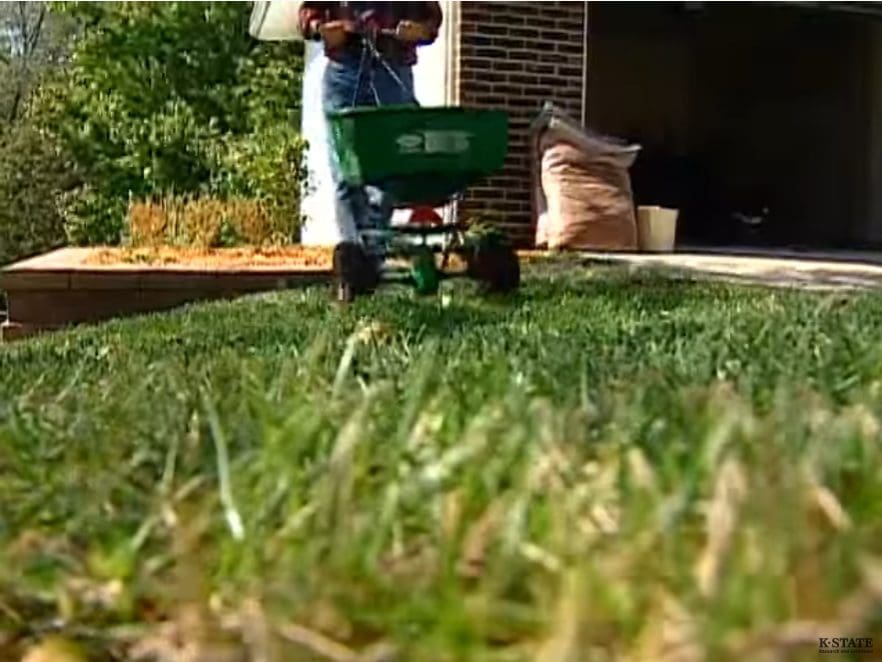By Pat Melgares, K-State Research and Extension news service
Manhattan, KS – Cool-season grasses, like the Kentucky bluegrass and tall fescue lawns common to many parts of Kansas, have had about enough of summer.
The state’s high temperatures and sporadic rainfall often cause cool-season varieties to become thin by summer’s end. September typically signals a good time to replenish those stands, said Kansas State University horticulture expert Ward Upham.
“Start by mowing the grass short (1 to 1 ½ inches) and removing the clippings,” he said. “This will make it easier to achieve good seed-soil contact and increase the amount of light that will reach the young seedlings.”
Then, he says, check the lawn’s layer of thatch – an organic layer of dead and living shoots, stems and roots that develops between the zone of green vegetation and the soil surface.
“Normally, we’d want ¼ inch of thatch or less when overseeding,” Upham said. “If the thatch layer is ¾ inch or more, it is usually easier to use a sod cutter to remove it and start over with a new lawn. A power rake can be used to reduce a thatch layter that is less than ¾ inch, but more than ¼ inch.”
Preparing the soil
Once thatch is under control, Upham said homeowners can use a hand rake to roughen up soil in small areas. For larger areas, he suggests either a verticut machine or core aerator.
“A verticut machine has solid vertical blades that can be set to cut furrows in the soil,” he said. “A slit seeder is a verticut machine with a seed hopper added so the soil prep and seeding operation are combined.”
By contrast, a core aerator literally punches holes in the soil, depositing the cores on the surface of the ground.
“Each hole produces an excellent environment for seed germination and growth,” Upham said. “Make 3-4 passes with the core aerator to ensure enough holes for the seed.”
A core aerator also reduces the amount of water needed to germinate the seed. Aeration increases the water infiltration rate, decreases compaction and increases the amount of oxygen in the soil.
“Of the three methods (for large areas), I prefer the slit seeder for obtaining good seed to soil contact,” Upham said. “However, if watering is difficult, core aeration may be a better option.”
Upham noted that fertilizer should be applied to the lawn at rates suggested on the bag, regardless of which overseeding method is used.
Upham and his colleagues in K-State’s Department of Horticulture and Natural Resources produce a weekly Horticulture Newsletter with tips for maintaining home landscapes. The newsletter is available to view online or can be delivered by email each week.
Interested persons can also send their garden- and yard-related questions to Upham at wupham@ksu.edu, or contact your local K-State Research and Extension office.













